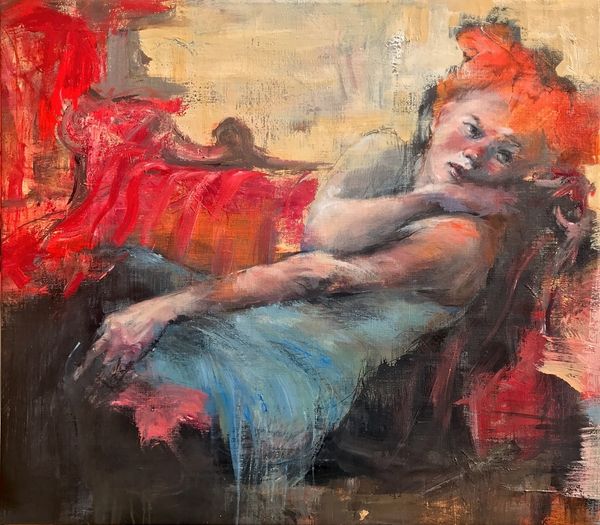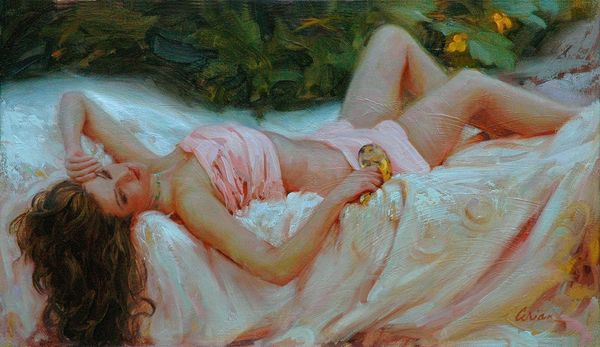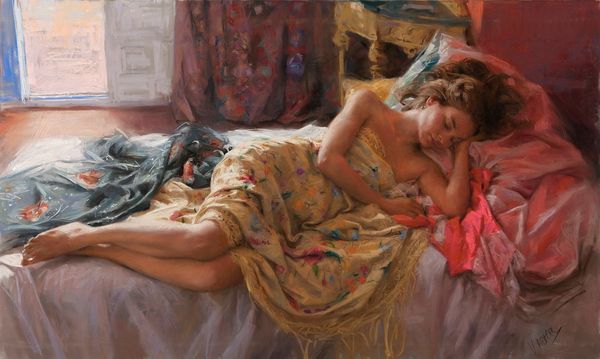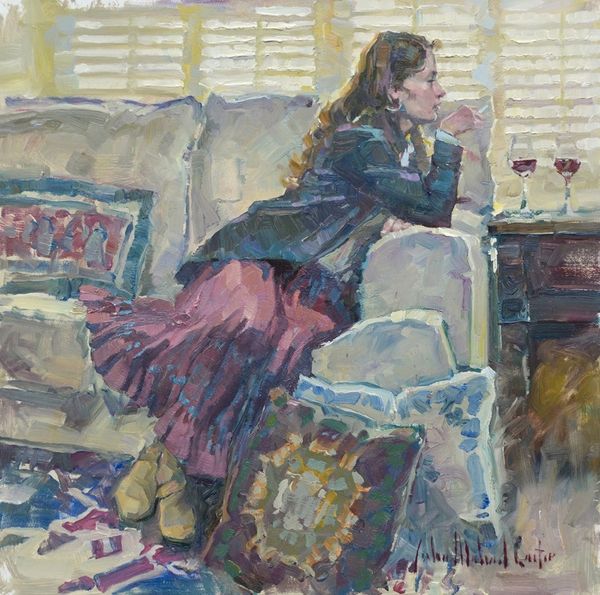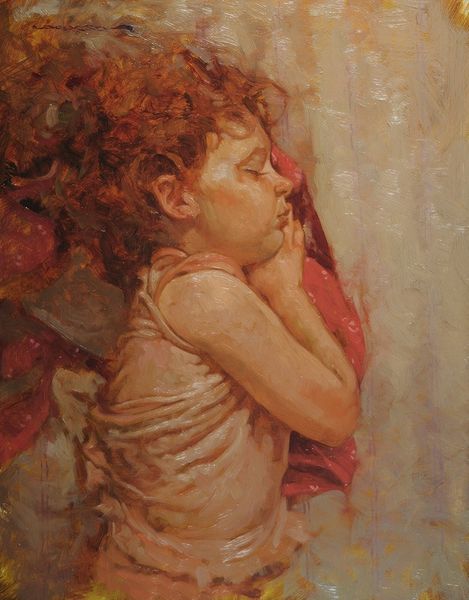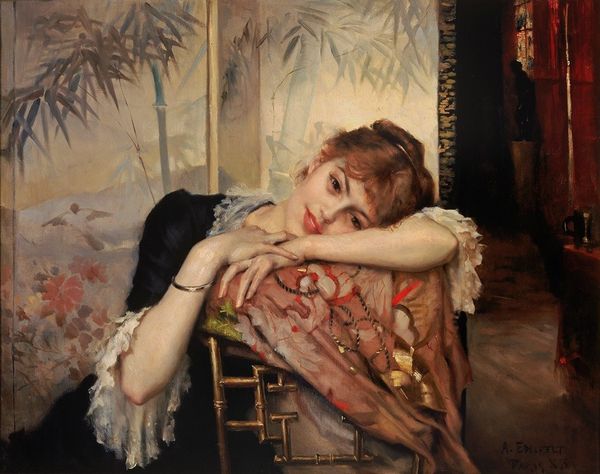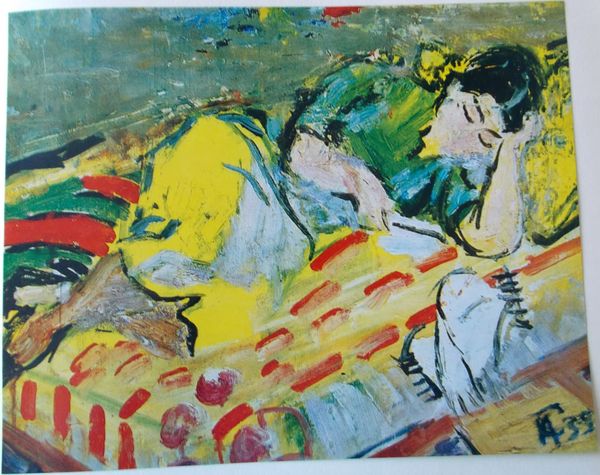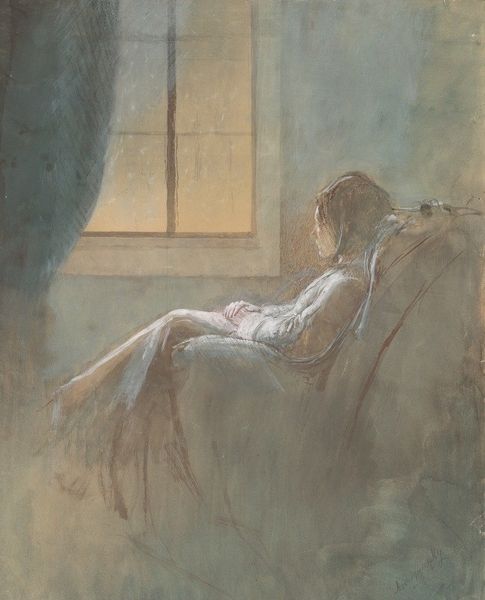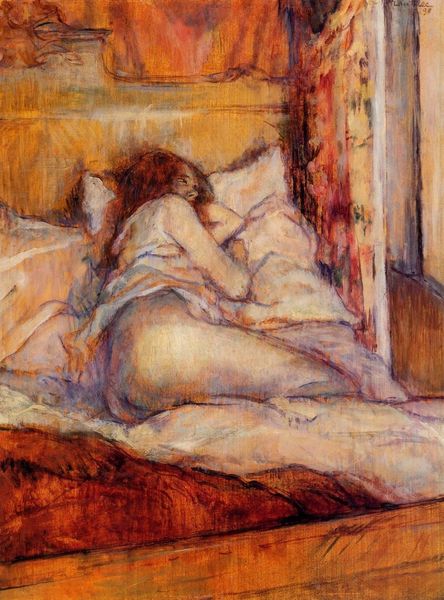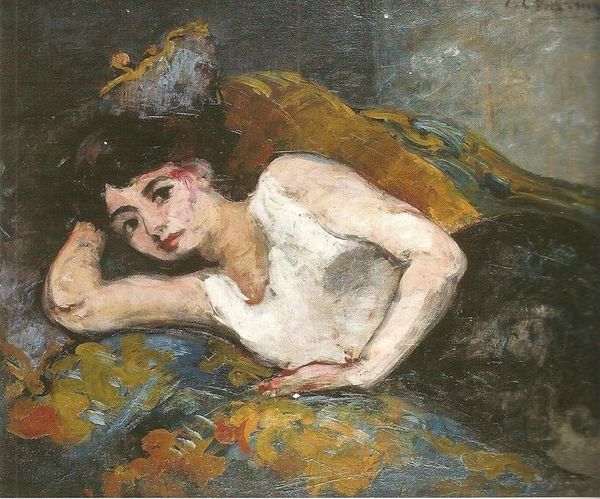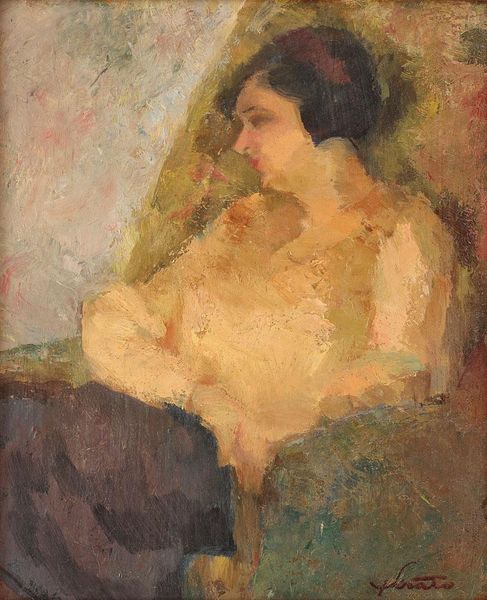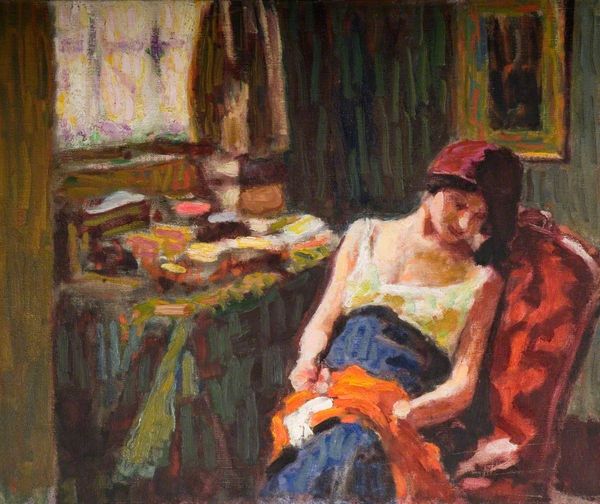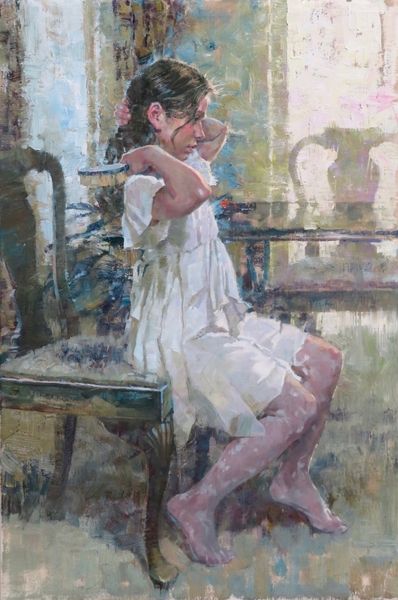
oil-paint, impasto
#
portrait
#
oil-paint
#
figuration
#
oil painting
#
impasto
#
intimism
#
expressionism
#
genre-painting
#
post-impressionism
#
expressionist
Copyright: Public domain US
Curator: What captures my eye immediately is the vulnerable tenderness in "Young Girl Reclining" from 1897, an oil painting by Émilie Charmy. Editor: It hits me as melancholic. The bold reds are tempered by the girl's downcast gaze, a quiet rebellion against the vibrant colors that try to shroud her in liveliness. Curator: Charmy certainly infuses emotional depth here, but it's the composition I find most striking. The reclining figure—an archetype, really—made personal. She rests not on a plush divan as one might expect, but amidst impasto brushstrokes and color clashes that hint at deeper emotional turmoil. Editor: Precisely. Think about the historical moment – the end of the 19th century when patriarchal norms forced many women into restrictive roles, denied independent pursuits, and often reduced them to objects within the domestic sphere. The painting acts as an intervention: we have a glimpse into a young woman's private space where vulnerability becomes agency. Curator: Her expression, yes. There's an introspective quality. The red perhaps symbolizes passion, a burgeoning selfhood still in the process of formation, battling with societal expectations reflected in her subdued pose. It's almost a symbolic dream space. Editor: Or perhaps it also subtly addresses the expectations imposed on women’s bodies in art. She reclines, as female figures have been expected to do for centuries, but there is little sense of ease or seductive pleasure in the image. Charmy offers a glimpse into the real inner space of the sitter, not a voyeuristic male gaze. Curator: Indeed. It challenges that gaze by prioritizing the internal. The choice of impasto too, the thickly applied paint, speaks volumes. It is more than mere technical flourish; it conveys an immediacy and rawness. Charmy invites us to empathize, not objectify. Editor: By capturing a young woman on the precipice of adulthood, Charmy reflects a pivotal moment in the trajectory of female identity. And I would argue she makes space for viewers of every identity to question not only their perception but the structural limitations that confine authentic selfhood. Curator: It's remarkable how much dialogue can spring from a simple pose and an artist's individual vision. This image becomes not only an expression of youthful introspection, but an appeal for social awakening as well. Editor: It proves that potent resistance can thrive in these pockets of stillness. I see, through this lens, a painting more resonant, and perhaps even more radical, than I first recognized.
Comments
No comments
Be the first to comment and join the conversation on the ultimate creative platform.
